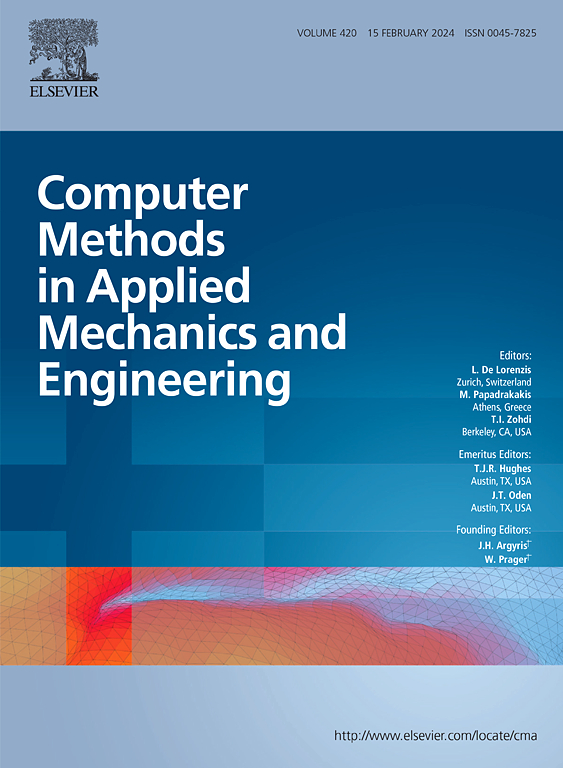Patch based unbiased 3D frictional contact formulation for finite element algorithms
IF 6.9
1区 工程技术
Q1 ENGINEERING, MULTIDISCIPLINARY
Computer Methods in Applied Mechanics and Engineering
Pub Date : 2025-04-10
DOI:10.1016/j.cma.2025.117958
引用次数: 0
Abstract
A new truly unbiased frictional contact formulation exclusively leveraging the midplane-based segment-to-segment (STS) interaction with a predictor–corrector approach is presented. Unlike the traditional master–slave based dual pass approaches, this formulation only requires a single pass providing a computational advantage in comparison. This work details the development of a penalty-regularised frictional contact between discretised surfaces following an equivalent description in the continuum space. The relative motion between the contacting segments is studied through changes in the interacting convective coordinates in overlapping regions, thus ensuring an unbiased formulation without labelling surfaces as master and slave. Here, the stick–slip frictional states are enforced over interacting regions (patches) of all STS pairs instead of the node on segment pairs by utilising the return mapping algorithm. The formulation inherently maintains the traction equality on opposite surfaces of all contact pairs. The robustness of the formulation is demonstrated through several examples with varying contact conditions of stick–slip states and transition in static and dynamic problems including flat and curved surfaces, rolling effect, self-contact and impact.
基于贴片的无偏三维摩擦接触有限元算法
提出了一种新的真正无偏的摩擦接触公式,专门利用基于中间平面的段对段(STS)相互作用与预测校正方法。与传统的基于主从的双传递方法不同,该公式只需要一次传递,相比之下提供了计算优势。这项工作详细介绍了在连续空间中的等效描述之后离散表面之间的惩罚正则化摩擦接触的发展。通过在重叠区域中相互作用的对流坐标的变化来研究接触段之间的相对运动,从而保证了不将曲面标记为主从曲面的无偏公式。在这里,通过使用返回映射算法,在所有STS对的相互作用区域(补丁)上而不是在段对上的节点上强制执行粘滑摩擦状态。该公式固有地保持所有接触对的相对表面上的牵引力相等。通过对平面和曲面、滚动效应、自接触和冲击等静态和动态问题中粘滑状态和过渡的不同接触条件的算例,证明了该公式的鲁棒性。
本文章由计算机程序翻译,如有差异,请以英文原文为准。
求助全文
约1分钟内获得全文
求助全文
来源期刊
CiteScore
12.70
自引率
15.30%
发文量
719
审稿时长
44 days
期刊介绍:
Computer Methods in Applied Mechanics and Engineering stands as a cornerstone in the realm of computational science and engineering. With a history spanning over five decades, the journal has been a key platform for disseminating papers on advanced mathematical modeling and numerical solutions. Interdisciplinary in nature, these contributions encompass mechanics, mathematics, computer science, and various scientific disciplines. The journal welcomes a broad range of computational methods addressing the simulation, analysis, and design of complex physical problems, making it a vital resource for researchers in the field.

 求助内容:
求助内容: 应助结果提醒方式:
应助结果提醒方式:


